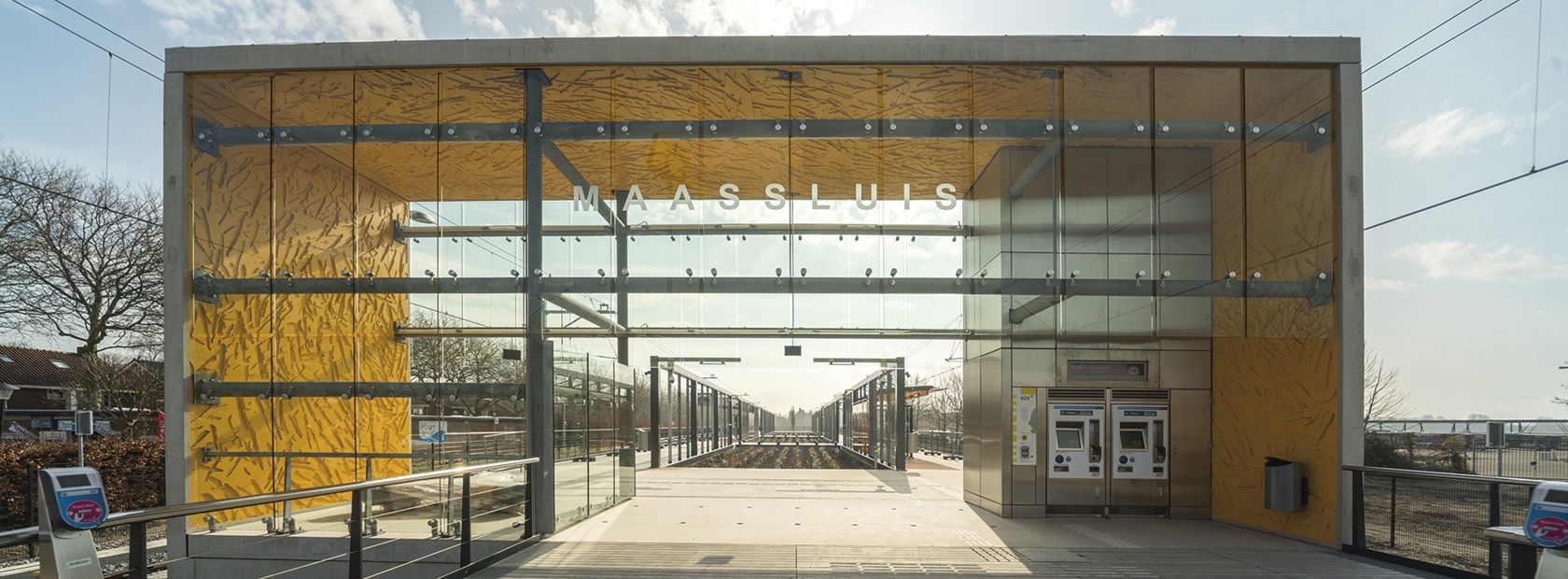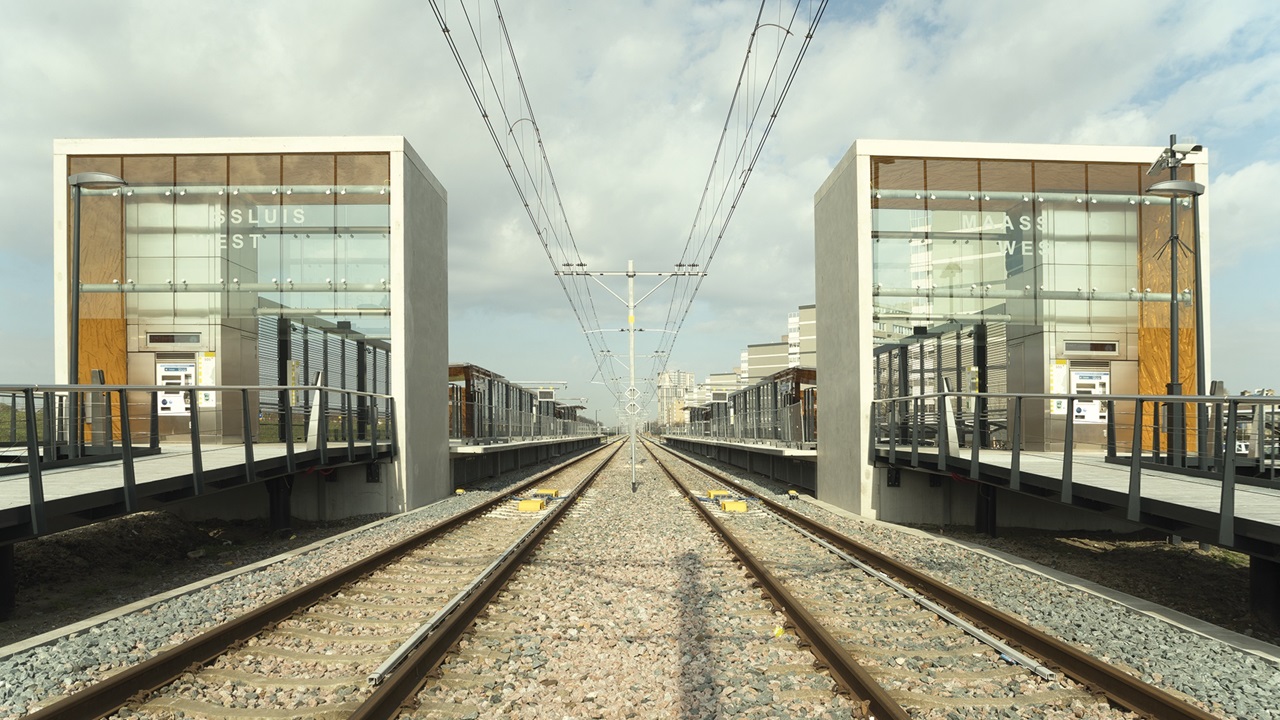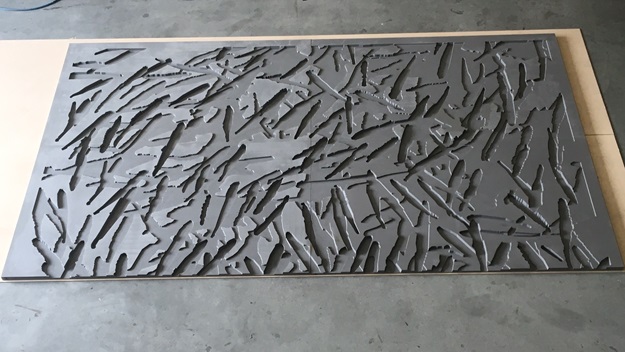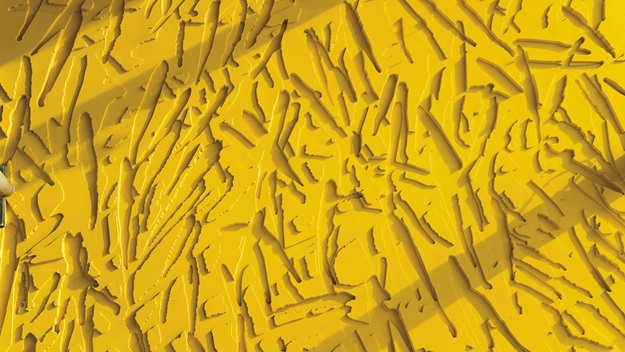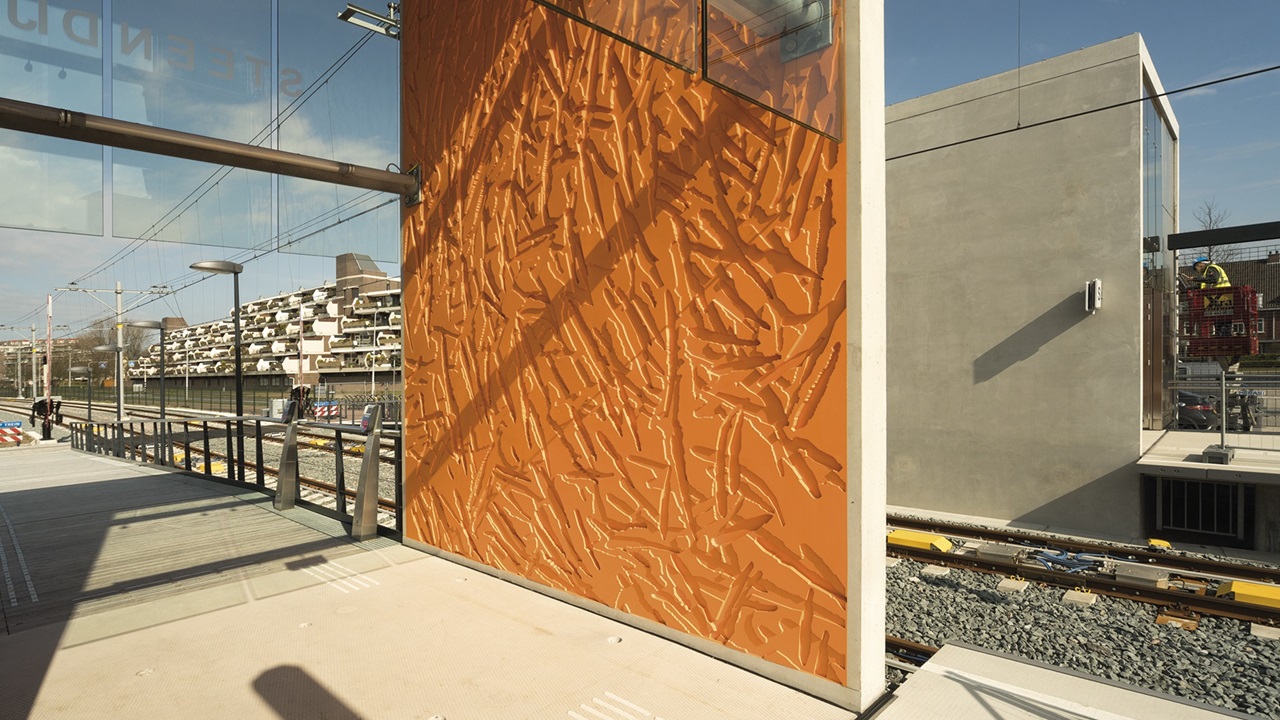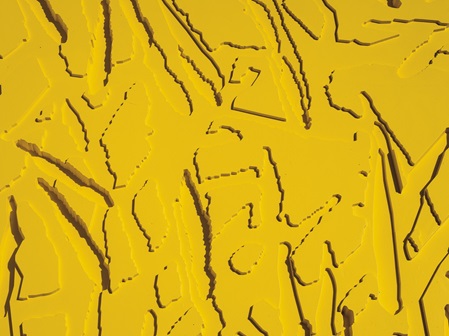Towards the setting sun
Hook of Holland is part of the city of Rotterdam. However, it evokes the impression of a coastal town and seaside resort in the mind of the visitor. The city of Schiedam lies about 30 km away at the other end of the line. An extensively refurbished metro line runs between the two. As part of this project, the stations along the line were dramatically transformed and new stops added. Now the line begins at one beach and ends at another. Dutch architect Marc Verheijen decided to design the stations such that they would consistently place the image of closeness to the beach in the rail traveller’s mind: fair-faced concrete portals with a relief of a stylised school of fish now adorn the stations. In addition, the concrete was pigmented so that passengers would notice steps of colour from yellow to orange on the journey between Schiedam and Hook of Holland. Rail travellers would form the impression that they were moving towards the setting sun.
From sketch to model
The school of fish motif comes from the pen of Rotterdam designer Erik Sandifort. In the motif, he is comparing the fish with travellers who are on their way to a common destination. To lend the structure a certain dynamic, he deliberately depicts the fish as abstract outlines. NOE also offers to realise customers' own designs. The latter option was chosen for the construction of the Dutch concrete portals. The first step was to scale up the Rotterdam designer’s sketch to a size of 4.00 x 7.00 m. Then the image was realised in varying depths on the relief. Only by making use of the shadow effects created by this approach is this sort of sculptural depiction possible. Then a full-scale model of the relief is made using a CNC milling machine. From this a polyurethane mould is made, in which the actual textured formliners are then cast.
Easy to use
NOE offers a very special service: as the manufacturer of both formwork and textured liners, NOE can offer the textured formliners attached to formwork panels or supporting boards in the factory, which can then be screwed onto the actual formwork. This provides decisive advantages on sites where mainly in-situ concrete is used. A further plus point of NOE textured formliners is that they can be reused up to 100 times, depending on the actual texture and conditions of use. This means that the more often a textured formliner is used, the lower the cost per constructed square metre becomes. The designers took advantage of this principle and used the same textured formliners for all the portals constructed along the metro line. To do this, they made four textured formliner panels and placed them together to create the school of fish. The formliner panel is designed so that they can be endlessly placed one against the other without causing a break in the motif. Thus the contractor was able to construct the metro portals, which were between 7 and 14 m high, without encountering any problems.
Result and a look ahead
Client, architect and the graphic designer are very satisfied with the end result. Not least because the depth effect of the motif on the fair-faced concrete portals together with the colour nuances create a harmonious whole. It is planned to build another metro station (Hook of Holland Haven). Even at this stage when some constructional details have not yet been finalised, one thing is certain: it will have an entrance portal with a fish motif.

